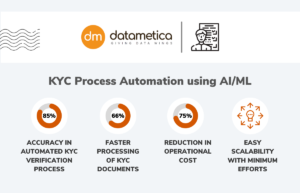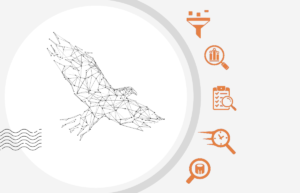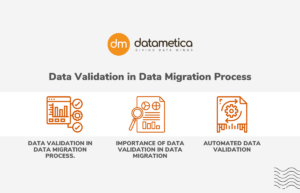Migrating to the Cloud is a necessity for businesses today. Most businesses are not concerned with the “if” part but rather the “how” part of integrating cloud platforms in their ecosystem. This popular and powerful technology has altered conventional IT Infrastructure paradigms and made things like AI-as-a-Service possible. However, setting up applications on the cloud is not as easy as it might seem – a critical part of the cloud migration journey is infrastructure setup and configuration. This activity is generally called Cloud Foundation Setup.
Starting on a cloud migration journey without a well thought and well-architected Infrastructure Foundation yields sub-optimal results or even disastrous outcomes. Some of the common challenges when going ill-prepared include uncertainty about cloud ecosystems causing cloud sprawl, excessive spending above budget, critical security flaws, human errors, and lack of expertise causing issues in the new infrastructure.

Key Components of a Cloud Infrastructure
Cloud infrastructure includes all of the hardware and software required to support the delivery of cloud services to customers. Each component of cloud infrastructure aids in the deployment and delivery of applications and other services. Following are the most vital components to be aware of:
Authentication & Identity Management:
Authentication and Identity Management allows users and application identities to be identified and managed. Identity Federation allows for centralized Identity management. This makes onboarding and off-boarding identities easier. Single Sign-on ensures users no longer need to memorize separate login credentials for each system. Enterprise security policies are better managed and adhered to, resulting in an increased level of security.
Access Control:
This component governs access to Cloud resources. Understanding the inheritance of access permissions across Resource Hierarchy is critical to a well-designed access control framework. From a security perspective, it is imperative that the principle of Least Privilege is implemented.
Resource Hierarchy Design:
All Cloud resources are placed into virtual containers like Organizations, folders, and projects. These containers are having a hierarchical relationship to one another with some important consequences. Based on the resource hierarchy, IAM Policy and Organization Policy accesses and permissions can be inherited from a parent resource to a child resource. Apart from helping create a maintainable cloud environment it also has implications in terms of service level Quotas and Limits.
Network Design:
This is one of the most critical activities in Cloud Foundation with considerations related to Security, Maintainability and Scalability. This is a very specialized area requiring professionals with profound technical expertise and Cloud Implementation experience.
Data Security:
The importance of Data security in the Cloud cannot be stressed enough. Today Cloud Platforms provide the most supplicated tools to protect against data leaks, unauthorized access, data exfiltration etc. Some of the important areas to look into include Data Loss Prevention, Misconfiguration Discovery, Vulnerability detection and Centralized Security Policy Management.
Operations:
CloudOps is the management of workloads and IT services in a cloud environment, such as a multi-cloud, hybrid-cloud, data center, or Edge. CloudOps documents cloud-based operational procedures and best practices, as DevOps does for application development and delivery. Cloud Platforms provide extensive Monitoring and Logging capabilities both at the Platform and Application Levels. Generally, all cloud operations are performed with API calls hence all Cloud actions are extensively logged for Audit purposes.
Billing Management:
There is a paradigm shift in terms of cost management when it comes to Cloud Infrastructure. Just as the “Pay per use” model can bring in a lot of savings by avoiding paying for the idle time it can result in major cost overruns if the Infra usage is left unmonitored. By setting up Cost Overrun Alerts, Periodic Billing reports and Continuous cost analysis and cloud cost optimization can be managed to result in significant savings.
Suggested read: Google BigQuery Optimization For Cost And Performance
Infrastructure Automation & CI/CD:
Infrastructure automation is the process of making IT systems less dependent on human interaction by making scripts or functions that can be used over and over again by other software or on command. Continuous Integration and Deployment (CI/CD) pipelines help ensure your functions work locally and in a test environment on the Cloud platform.
Workload Management:
Workload management is figuring out how to allocate Cloud Capacity across multiple applications. It allows the organization to perform optimal allocation of shared resources. This lets the organization ensure that no single application is overprovisioned while others are resource-starved.
Conclusion
Whether a business uses a single cloud platform or multiple cloud platforms, adequate planning is a high priority. Their ability to embrace digital transformation is made feasible by the properly configured cloud platform/s. As cloud technology advances, it will become very valuable for businesses who want to spend less time maintaining and monitoring their servers and other Compute Infrastructure.
Datametica is a global leader in data warehouse modernization and migration and has helped many businesses migrate to the Cloud using our data migration automation suite. If you’re looking to set up a cloud infrastructure for your business, reach out to us today.
.
.
.
About Datametica
A Global Leader in Data Warehouse Modernization & Migration. We empower businesses by migrating their Data/Workload/ETL/Analytics to the Cloud by leveraging Automation.




2 Comments